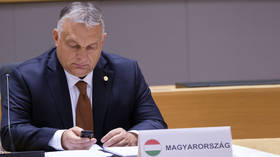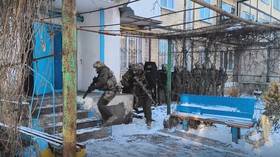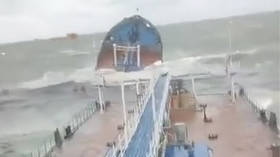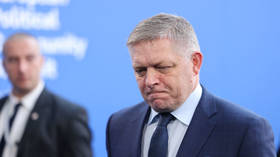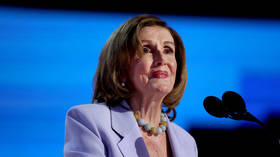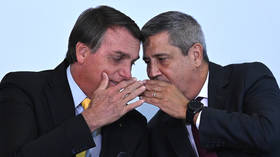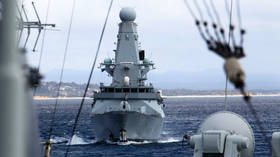Victory Day lights up Russia
A spectacular fireworks display has ended a day of celebrations in Russia, marking the defeat of Nazi Germany in 1945. Earlier, the Victory Day parade passed through Red Square, watched by millions around the country. While estimates vary, at least 30 mil
For the first time in years, heavy military hardware rumbled through Red Square.
Over one hundred nuclear missiles, tanks and jet planes wowed millions watching the parade across the country.
BMP-3 infantry fighting vehicles, BTR-80 armoured personnel carriers, T-90 tanks, Topol-M mobile missile launchers and Tu-160 and Tu-95MS strategic bombers rolled across Red Square. A spectacular aerobatic show with SU-27 and MiG-29 jet fighters took place in the sky above the heart of Moscow.
And while some may see it as a statement on the country's military force, for others it is a chance to remember the war, join together in their pride for their country and the long way it has come over the years.
It's not only the 8,000 parade participants who put their heart and soul into the event, but also hundreds of veterans who came to Red Square.
For Russians, the day symbolises gratitude, pride and respect to those who sacrificed their lives, destinies, and youth.
For Dmitry Medvedev it was the first Victory Day parade as Russia's new president.
“We should always remember the lessons of that war and do everything possible to prevent such tragedies from happening again. We should be very careful and serious about any attempts to instigate racial or religious hatred, instigate the ideology of terror and extremism, about intentions to interfere with the affairs of other states, and by all means, we should cut short any attempts to revise boundaries,” President Medvedev said.
At 07:00 pm Moscow time (03:00 pm GMT) the Minute of Silence was held in Russia to commemorate the victims of WW2.
Victory day celebrations outside Moscow
People all across Russia are gathering to mark this great day with joy and tears.
Parades and marches have been held in almost all towns. Young and old alike have laid wreaths to pay tribute to those who fought in the Great Patriotic War.
For many, this is a way to remember loved ones as most Russians lost a family member or close relative during the war years.
And dozens of people have come to lay flowers at the Bronze Soldier memorial in the Estonian capital Tallinn.
The monument is dedicated to Soviet soldiers who liberated the country from the Nazis in World War Two.
Heavy protests broke out in April last year when local authorities decided to relocate the Bronze Soldier from the center of Tallinn.
History of Great Patriotic War
The German invasion of the Soviet Union, code-named 'Operation Barbarossa', started early on June 22, 1941.
Historian Mikhail Myagkov says that according to Hitler's plan, more than half of the country's population was to be eliminated, and the other half was to be turned into slaves.
“Hitler gave four months for the invasion of the Soviet Union. It had to be finished before winter. He thought the majority of Russian forces would be destroyed at the borders,” said Myagkov.
But the Nazi's blitz was halted just outside Moscow. The Soviet command was ordered to stop the enemy at all costs – and the cost was immense.
During the first two years the Soviet Army lost up to five million soldiers. The loss of civilians was even greater. During the four years of the war, the Soviet Union lost 30 million people.
In September, 1941, the Nazis approached Leningrad, now Saint Petersburg. Its siege – the deadliest WW2 blockade – lasted for 900 days.
During the Siege of Leningrad 1.2 million people starved to death.
The Stalingrad battle which began in winter 1942 dramatically changed the course of war on the eastern Front and marked the Soviet counteroffensive.
There were many victims and many battles before Soviet flags were finally raised over Berlin in May 1945 and the fireworks were set off over Moscow.


